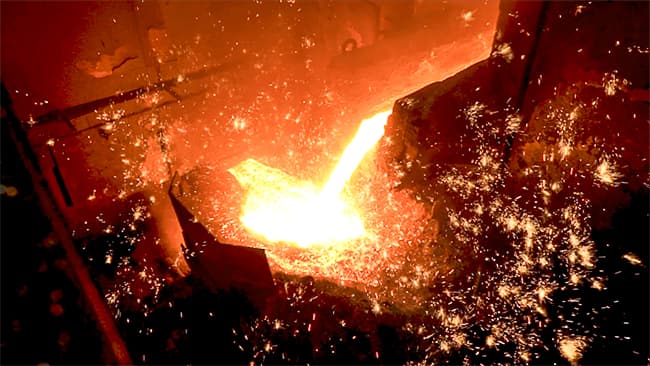
Metallurgy is the science of how metals behave and how we use them. The word comes from Greek words meaning “metal” and “work.” Metallurgy looks at extracting, purifying, combining, and heat-treating metals to make useful products.
Metallurgists study how the structure and composition of metals affect their properties under different conditions, like temperature, stress, and corrosion. While early civilizations used metallurgy for tools and weapons, today, it is a specialized field with many applications across industries.
Why Metallurgy Matters in Construction?
Metallurgy plays a big part in modern construction. Understanding metals helps engineers design impressive buildings that withstand forces using special metal properties. Metals like steel have high strength for their weight, resist corrosion, and are malleable, ductile, and good conductors of heat and electricity. This makes them perfect for stable structural components in harsh environments.
Advances in metallurgy have created alloys optimized for construction needs.
Carbon steel is very strong for big infrastructure. Aluminum alloys are lightweight for aircraft-related buildings. Metallurgy research improves metals’ performance. Heat-treating steel boosts its strength and hardness, while galvanizing helps prevent corrosion. Modern construction relies on metallurgy to create safe structures with amazing designs.
Use of Metals in Ancient Construction
Metals have been important in construction since ancient times. They showed early civilizations’ skills. For example, the magnificent Egyptian pyramids used copper and bronze for decorations like doors, gates, and statues. They added gold and silver for luxury. This showed their knowledge of metals’ strength and ability to shape them.
The Romans built amazing aqueducts to transport water using lead pipes. Welding and soldering connected the pipe sections. This innovative plumbing met a basic need and used metals to shape the environment.
Industrial Revolution Advances in Metallurgy
The Industrial Revolution brought huge progress in metallurgy for construction. Inventions like Henry Bessemer’s Bessemer converter enabled mass production of quality, low-cost steel. This impacted worldwide building. Steel became a primary material because of its strength compared to stone or wood. Architects used its versatility for tall, bold buildings.
Famous structures like the Eiffel Tower showed steel’s potential for great heights.
Better iron production led to widespread cast iron use. This allowed ornate decorative details in London’s Crystal Palace exhibition hall. Metallurgy also advanced concrete construction. Steel bars reinforced concrete for unprecedented durability and creativity. Overall, the Industrial Revolution established metallurgy as the key to modern construction.
Key Metallurgical Properties
Strength and Durability
Metals for construction must be very strong and durable. The most used are steel, aluminum, and titanium. Steel has tremendous tensile strength to support heavy loads without bending or breaking. Aluminum combines lightness and strength, reducing weight without sacrificing integrity.
Titanium has exceptional strength-to-weight properties, critical for aerospace parts needing strength without heavy weight. Alloying and heat treating further strengthen construction metals.
Alloys combine a base metal with other elements to improve its properties. For example, alloys like carbon steel have extra chromium or nickel to increase strength and corrosion resistance. Controlled heating and cooling through heat treatments like quenching and tempering enhance metal’s mechanical properties.
Corrosion Resistance
Besides strength, construction metals need corrosion resistance for long performance in different environments. Corrosion slowly damages unprotected metal structures. Protective coatings and galvanization combat this issue.
Protective coatings provide a barrier between the metal and surroundings to prevent contact with moisture, chemicals, and other corrosion-causing factors. Common coatings are paints, epoxies, and polymers. Galvanization applies a zinc layer to the surface through hot-dip galvanizing or electroplating.
The zinc acts as a sacrificial anode, protecting the underlying metal. Stainless steel is corrosion-resistant because of its high chromium content. This creates a passive oxide layer shielding the metal from corrosion.
Metals in Construction
 Metallurgy develops sturdy building components that withstand immense loads and environments through metals like steel and aluminum alloys.
Metallurgy develops sturdy building components that withstand immense loads and environments through metals like steel and aluminum alloys.
Steel Structures
Steel is prized for its strength, durability, and flexibility. This makes it perfect for skyscrapers and high-rises.
Steel beams, columns, and trusses provide essential support. Beams spread weight throughout the frame. Columns carry vertical loads. Trusses transfer forces efficiently using triangular shapes.
Welding like MIG, TIG, and arc creates strong connections between steel parts by fusing metals with an electric arc’s heat. This structural integrity is vital.
Skyscrapers and High-Rise
Steel’s strength-to-weight ratio in tall buildings is key for stable, lightweight structures under heavy loads. Steel withstands compression better than concrete alone in vertical supports.
Steel frames allow design changes without compromising integrity.
Like fusion welding, modern welding enables seamless connections and minimal distortion during assembly. Robotic welding boosts precision and efficiency in fabrication.
Bridges and Infrastructure
Steel is also extensively used in bridges because of its excellent load-bearing strength. Steel girders and cables absorb and distribute vehicle, pedestrian, and other loads. Steel’s ability to span long distances with minimal support makes it ideal for bridges. Steel structures are often shielded from corrosion in harsh environments by galvanized coatings.
Aluminum Alloys
Aluminum alloys are indispensable in construction, like aerospace, for their lightweight strength and corrosion resistance.
Aircraft Manufacturing
In aircraft, aluminum’s low density decreases weight without sacrificing strength, improving fuel efficiency and payload capacity. Aluminum also dissipates heat from hot engine parts. Extrusion, forcing aluminum alloys through a shaped die under pressure, allows complex custom profiles perfect for lightweight construction.
Metallurgy provides advanced building materials with exceptional properties. Steel offers unmatched strength in skyscrapers through beams, columns, trusses, and welding.
Steel girder bridges also use steel load-bearing strengths, while aluminum alloys enable lightweight yet robust aerospace constructions. Metallurgy continues shaping modern construction through materials science innovations.
Specialized Applications
Fire-Resistant Materials
Fire safety is important in crowded buildings. Metallurgy develops fire-resistant materials that withstand intense heat and prevent structural collapse during fires.
One method uses intumescent coatings on structural components. These coatings expand to form an insulating layer when heated, slowing heat transfer to the metal underneath. This delay provides vital evacuation time and extended fire control.
Metallurgists also create fire-resistant alloys like nickel-based alloys, keeping strength at high temperatures with excellent oxidation resistance for aircraft engines and power plants.
In Sum
Metallurgy has evolved alongside construction over time into an essential discipline in modern building projects. From early civilizations applying metals like iron and bronze to today’s advanced steel skyscrapers and lightweight aluminum aerospace alloys, metallurgical progress continues shaping our built world.
Specialized metallurgical applications provide innovative solutions for construction’s evolving challenges. Fire-resistant materials like intumescent coatings and alloys protect against fire’s devastating effects.
Using materials science and engineering, we construct lasting structures and promote safety. Metallurgy’s contributions to durability, strength, and safety cannot be overstated. Ongoing research and innovation promise breakthroughs that define metallurgy’s future role in safer, more sustainable construction.